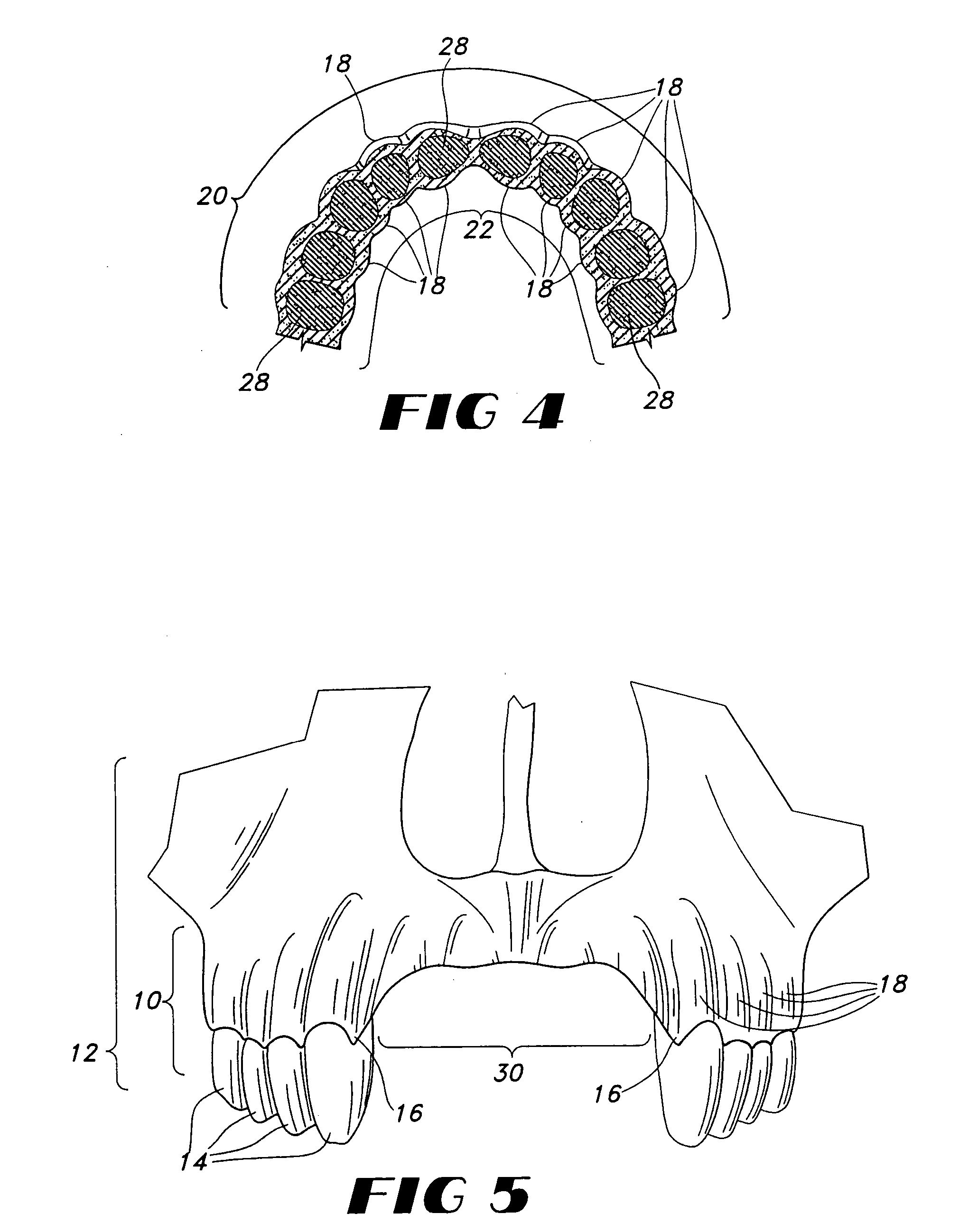Biocompatible form and method of fabrication
a biocompatible and implantable technology, applied in the field of bone implants, can solve the problems of loss of interproximal crestal alveolar bone, difficult restoration, and unappealing aesthetically
- Summary
- Abstract
- Description
- Claims
- Application Information
AI Technical Summary
Benefits of technology
Problems solved by technology
Method used
Image
Examples
Embodiment Construction
--Intraosseous Implant
[0102] A patient with missing teeth requires restoration. A CAT scan of the area to be regenerated along with its surround arch form is performed. A computer-generated resin model of the existing bony contours and the remaining dental arch is fabricated. The model is mounted on articulator (Whipmix.RTM., Lexington, Ky.) with the opposing arch. The missing teeth on the resin model are positioned in a normal anatomic position to determine the amount and contours of the bone to be regenerated. Wax or other medium is applied to the resin model to simulate the contours of the bone. The model is duplicated by conventional means. An intraosseous biocompatible form from the kit shown in FIG. 31 is selected that matches the patient. A biocompatible form 40 or 70 for a complete edentulous arch of the maxilla or mandible arch respectively, can be used or a biocompatible form such as 62, which is a portion of the full arch, can be used. The surgeon selects a biocompatible ...
PUM
 Login to View More
Login to View More Abstract
Description
Claims
Application Information
 Login to View More
Login to View More - R&D
- Intellectual Property
- Life Sciences
- Materials
- Tech Scout
- Unparalleled Data Quality
- Higher Quality Content
- 60% Fewer Hallucinations
Browse by: Latest US Patents, China's latest patents, Technical Efficacy Thesaurus, Application Domain, Technology Topic, Popular Technical Reports.
© 2025 PatSnap. All rights reserved.Legal|Privacy policy|Modern Slavery Act Transparency Statement|Sitemap|About US| Contact US: help@patsnap.com



